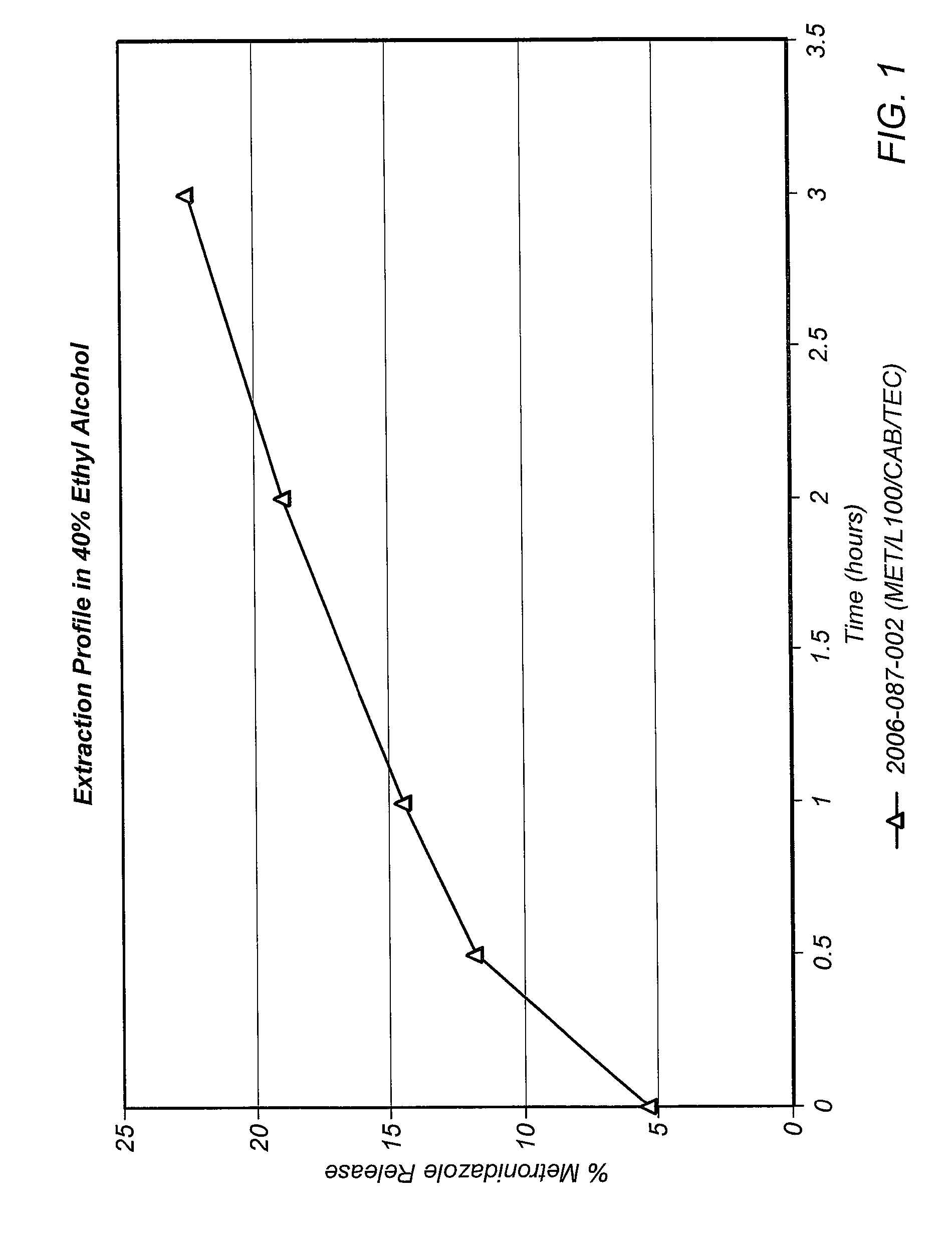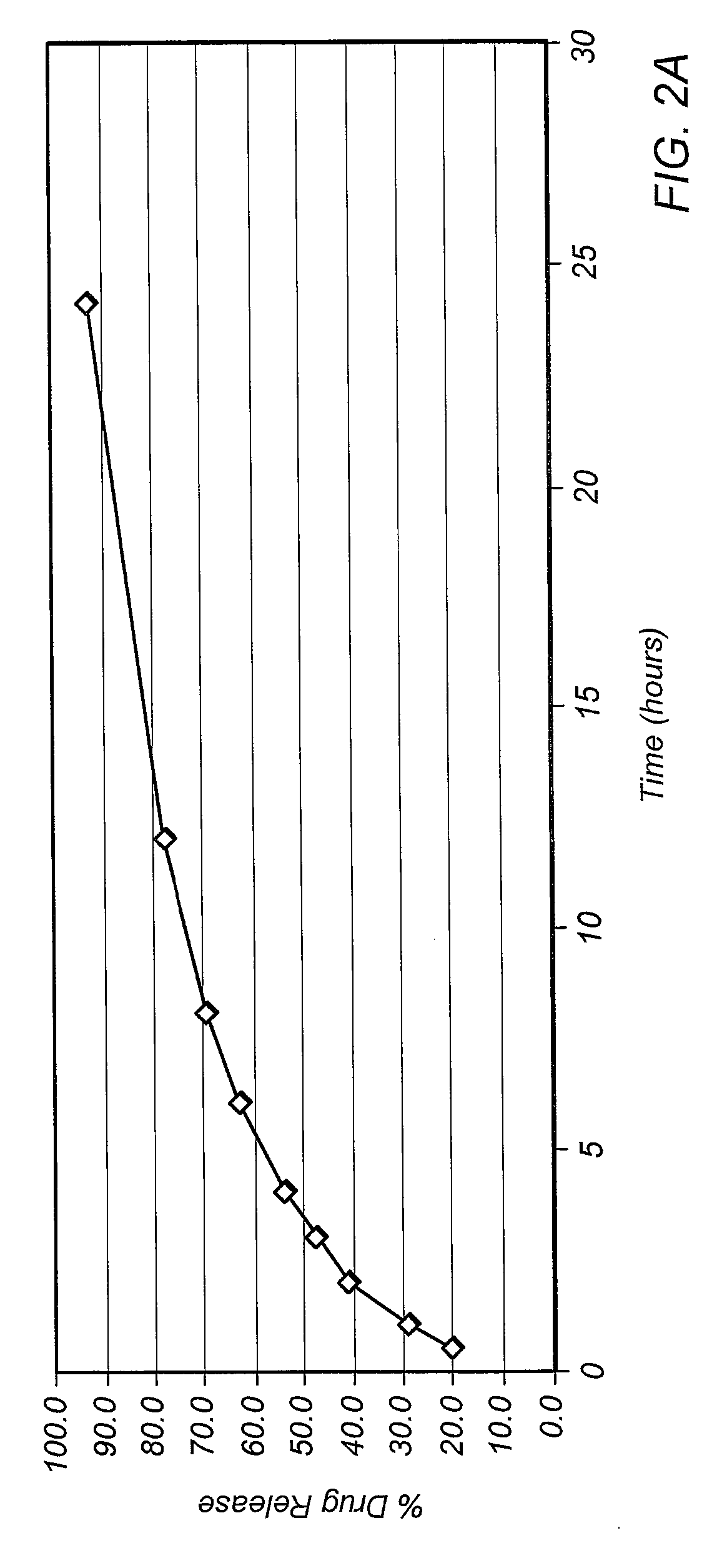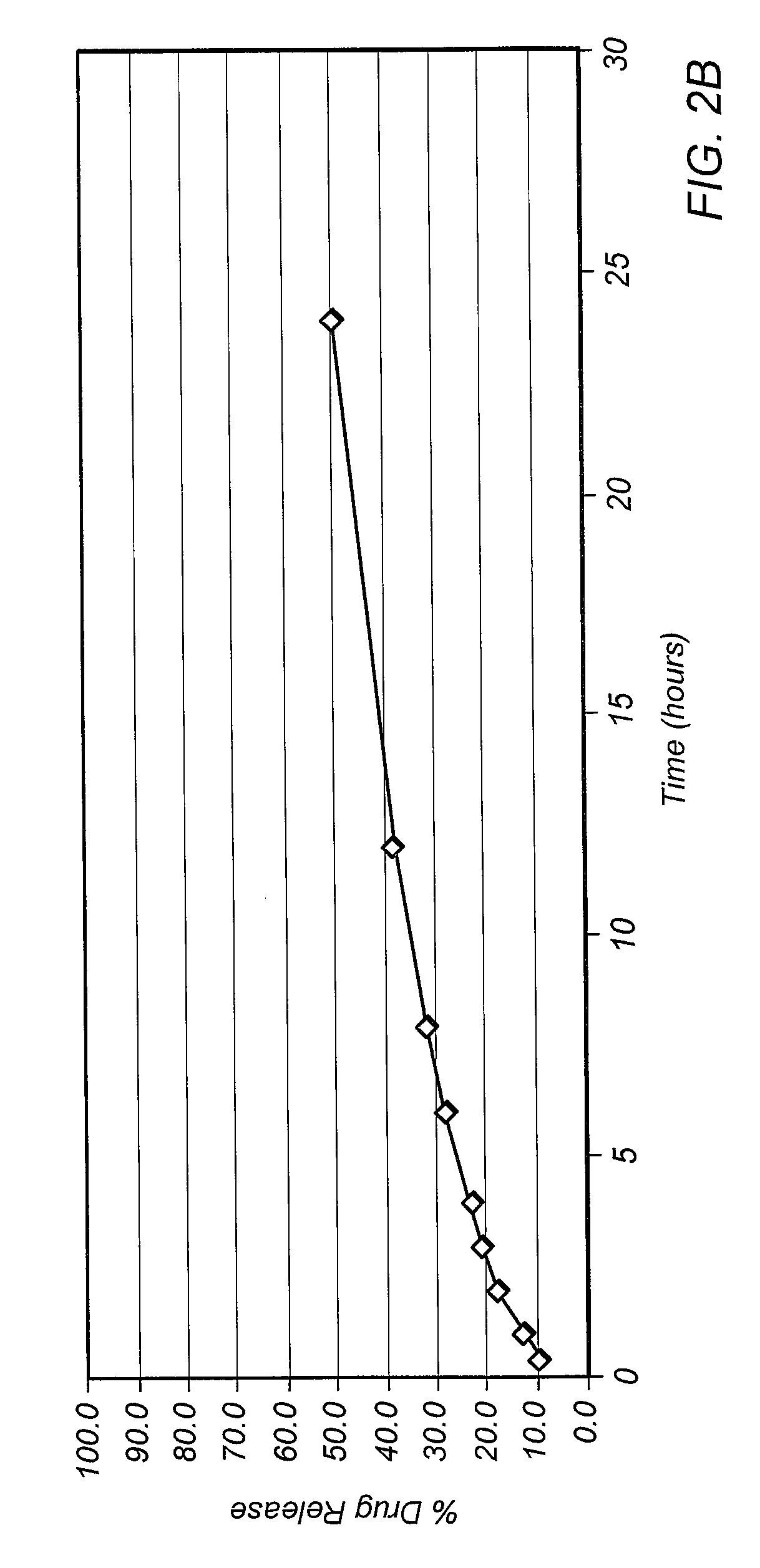Hydrophobic abuse deterrent delivery system
a delivery system and hydrophobic technology, applied in the direction of biocide, nervous disorder, drug composition, etc., can solve the problems of inability to deter the use of nasal inhalation and particularly problematic abuse of narcotic substances
- Summary
- Abstract
- Description
- Claims
- Application Information
AI Technical Summary
Benefits of technology
Problems solved by technology
Method used
Image
Examples
example 1
[0147] Eudragit L100 was mixed with Triethyl Citrate, Cellulose Acetate Butyrate and Metronidazole in the amounts listed in Table I. While metronidazole is not ordinary considered a drug that is subject to abuse, it was used as a model in the present example because it is highly soluble in water and aqueous ethanol solutions.
[0148] The mixture was dry blended and the resultant blend was hot melt extruded into rods using a Davis Standard 1.25 inch single screw extruder operating at 90-150° C. equipped with a ⅜″ die which were subsequently cut into 200 mg tablets.
TABLE I%Ingredientw / wEudragit L10060Triethyl Citrate15Cellulose Acetate Butyrate20Metronidazole5
[0149] The tablets were placed into 4 ounce containers with 36 mL 0.1N HCl and shaken using an orbital shaker for 5 minutes at room temperature. Twenty four mL of Ethanol (100%) was added to the HCl solution to adjust the final alcohol concentration to 40% and shaking was continued for 3 hours. Samples of the ethanol solution we...
example 2
[0151] Water-insoluble polymer (ethyl cellulose) was used to prepare an oral dosage form also including water-soluble polymers (cellulose, carbomer and polyethylene oxide).
TABLE II%Ingredientw / wOxycodone5Hydroxypropyl Cellulose (Klucel HF)51Dibutyl Sebacate9Vitamin E Oil1Ethyl Cellulose25Polyethylene Oxide4Carbomer5
[0152] The ingredients of Table II were blended and introduced to an extruder. Dibutyl sebacate is a plasticizer. Rods were extruded with a screw speed of 25 rpm and the extruder zones were heated to the temperatures listed in Table III. The resultant rods were cut into 400 mg tablets.
TABLE IIIExtruder ZonesTemperatureZone 1110° C.Zone 2110° C.Zone 3115° C.Die115° C.
[0153] After solidification the tablets were analyzed for their alcohol extractability in 40% ethanol with an orbital shaker for 3 hours at 240 cycles / min. The tablets were placed into 4 ounce containers with 36 mL 0.1N HCl and shaken using an orbital shaker for 5 minutes at room temperature. Twenty four m...
example 3
[0155] Ethocel STD 100 (Dow Chemical) was mixed with Diethyl Phthalate, Hydroxypropyl Cellulose-HF (Aqualon), Lutrol F127 Micro (BASF), Citric Acid, Silicon Dioxide and Hydromorphone HCl in the amounts listed in Table IV.
TABLE IV%Ingredientw / wEthocel STD 10044.5Diethyl Phthalate20Hydroxypropyl Cellulose-HF10Lutrol F127 Micro5Citric Acid10Hydromorphone HCl10Silicon Dioxide0.5
[0156] The ingredients of Table IV were blended and introduced to an extruder. Rods were extruded and cut into 100 mg and 300 mg tablets.
[0157] The rate at which the tablets dissolve, and thus release the hydromorphone HCl, was determined. The 100 mg and 300 mg tablets were placed in 750 mL of 0.1 N HCl and stirred for 2 hours. After this time, the pH was adjusted to 6.8 with phosphate buffer and stirred for 22 hours using a USP Type II paddle apparatus at 75 rpm and 37° C. The drug release profile for the 100 mg tablets is shown in FIG. 2A and the drug release profile for the 300 mg tablets is shown in FIG. 2...
PUM
| Property | Measurement | Unit |
|---|---|---|
| pH | aaaaa | aaaaa |
| diameter | aaaaa | aaaaa |
| diameter | aaaaa | aaaaa |
Abstract
Description
Claims
Application Information
 Login to View More
Login to View More - R&D
- Intellectual Property
- Life Sciences
- Materials
- Tech Scout
- Unparalleled Data Quality
- Higher Quality Content
- 60% Fewer Hallucinations
Browse by: Latest US Patents, China's latest patents, Technical Efficacy Thesaurus, Application Domain, Technology Topic, Popular Technical Reports.
© 2025 PatSnap. All rights reserved.Legal|Privacy policy|Modern Slavery Act Transparency Statement|Sitemap|About US| Contact US: help@patsnap.com



